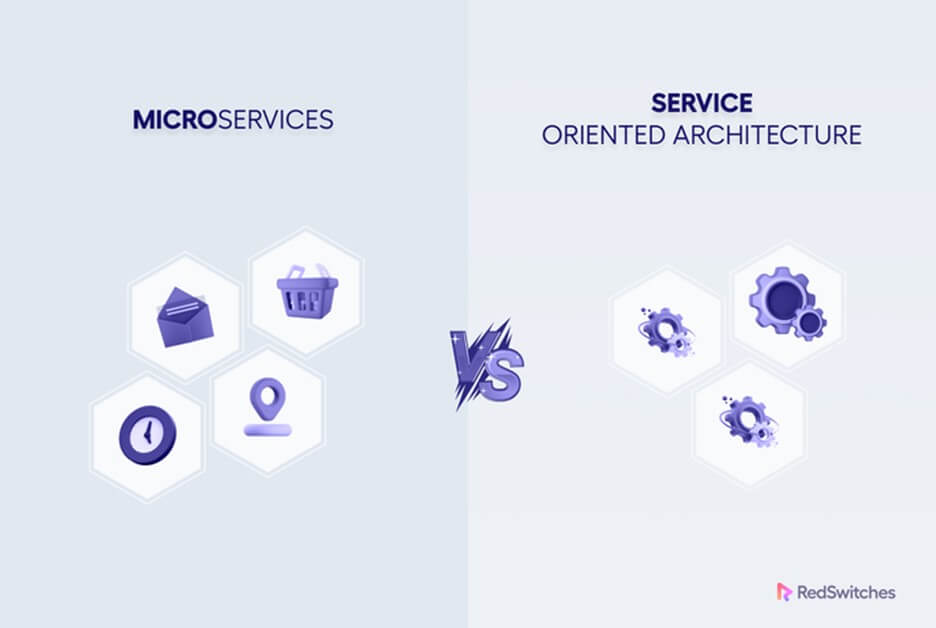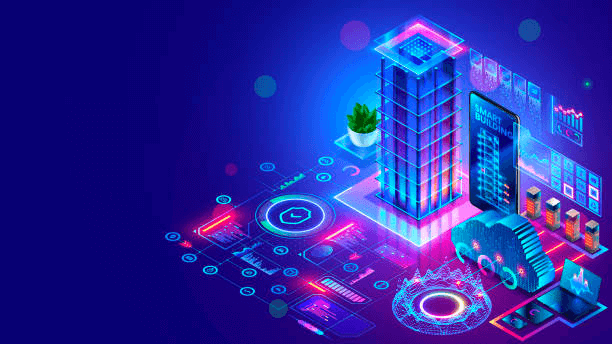How can modern businesses differentiate SOA vs microservices? First, both popular architectural concepts aim to create reusable components that can communicate through apps. However, they have differences in their implementation and scope.
Microservices are architecture designs that aim to break down monolithic systems into smaller app services. They can be applicable in accomplishing compatibility in app development. On the other hand, SOA is an architectural design pattern that helps to build systems to deliver services to other apps through a protocol. These two technologies share some features and benefits but still have differences in their application.
This guide will examine the difference between SOA and microservices architecture. We’ll look at their unique benefits and drawbacks. We’ll also discuss their application and offer tips on how to pick the best architecture, depending on your business needs. The goal is to help you understand how to create better software solutions.
Table of Content
- What Is Service-Oriented Architecture (SOA)?
- What Are the SOA Features, and How Do They Work?
- What Are Microservices?
- What Are Microservices Features and How Does It Work?
- SOA vs Microservices Differences
- Migrating From SOA to Microservices
- SOA vs Microservice Which Is Better?
- Key Takeaways
- FAQs
What Is Service-Oriented Architecture (SOA)?
SOA is a cloud architectural model for the software development of app components. These app components provide services to other components independent of any vendor over a network. In its nature, it is a service-oriented architecture.
SOA simplifies the collaboration of software components in multiple networks. It results in more independent web services since they’re built on its architecture. Now, SOA has four main service types, and they are:
- Application Services: These are for developing and launching apps.
- Enterprise Services: These are for implementing app functionality
- Functional Services: These are for enabling business app operations
- Infrastructure Services: These are for non-functional processes in the backend, such as security
Each of the above service types comprises three critical components:
- Contract: It outlines the interaction terms between the customer and the service provider.
- Application: Think of it as the “service code.”
- UI: It’s how a provider manages service requests from their subscribers.
What Are the SOA Features and How Do They Work?
There are several features offered by service-oriented architecture, including:
- Virtualization: Its main goal is delivering a consistent interface to the end user. It accomplishes that by leveraging the software service.
- Composition: It works by combining many services in app development.
- Registry: It’s the database of all services on offer and comes in handy when reusing the application services.
What Are Microservices?
Think of them as an extension of SOA, where several services communicate through APIs. Each of these services forms a network around a specific company domain. Combining these services creates an app system where each service is unique and independent.
One of the benefits of microservices is that it eases programmers’ work when updating code, lowering the costs associated with scaling. The best part is they’re fault-tolerant and run on the cloud.
What Are Microservices Features and How Does It Work?
Microservices have several features that distinguish them, such as:
- Decentralized: Each service is independent and operates its processes where it links with other services using APIs.
- Decoupling: Each service connects easily, which is helpful in app building or customization. In addition, each service has a feature and stack of servers.
- Business Capability: They align with a particular business domain and have boundaries with other services. It lowers the chances of work duplication.
- Agility: Each service unit is independent, meaning a provider can customize it depending on demand.
SOA vs Microservices Differences
There are several differences between service-oriented architecture and microservices that lie in their scope, including:
Data Duplication
SOA services come straight from the source. Its primary goal is to ease data exchange. The process helps to reduce the responsibility of maintaining complex synchronized data patterns. Microservices are independent, and they have access to local data.
Synchronous Calls
Link : Media iStock
The SOA model programmers often reuse components to boost efficiency and scalability through synchronous protocols. They accomplish that through APIs.
On the other hand, microservices synchronous calls create real-time dependencies that lower resiliency. To maintain high-performance levels, programmers must allow asynchronous communication through publishing or subscription.
Below is a table highlighting more pros and cons of service-oriented architecture vs microservices:
| Pros | Cons | |
| SOA | ● Its nature is monolithic
● It involves sharing of app components ● It shares databases between app services ● It is an ideal model for large-scale integrations ● It communicates through an ESB |
● It is not flexible for in-app launching
● Its tech stack is below par compared to microservice |
| Microservices | ● Its nature is a full stack
● In each service, it has its dedicated data storage ● It’s ideal for smaller web-based applications ● It communicates through an API ● It’s easy and fast to launch an app |
● They can’t conduct several tasks simultaneously
● You cannot share components with microservices |
Migrating From SOA to Microservices
SOA is a popular model that businesses have been using, and they can see it as a stepping stone to the modern business landscape. Although it offers scalability and flexibility, it cannot process some specific needs as microservices. It gets limited by coupling, monoliths, and complexity.
Microservices, on the other hand, come in and tackle all the pitfalls that SOA struggles with. It works by creating small automated services that link through APIs. It makes it agile and simple to process tasks fast.
It’s the reason migrating to microservices is crucial to a business operation because you can scale and be agile. However, before committing to any model, looking at what aligns with your goals is best.
SOA vs Microservice Which Is Better?
These two services offer varied pros and downsides.
Why choose SOA:
- Building multiple services that are independent of any other software
- To create reusable small services that will be scalable in the future.
- If you’re looking to create powerful applications with high availability.
Why choose microservices:
- Projects that use several programming languages and architecture.
- Implementation of agile processes in the development of applications.
- Leverage cloud resources to optimize your work processes.
- Flexibility in picking a suitable technology since you’re not limited to one.
Key Takeaways
- There is microservice vs SOA differences, each with a unique function. SOA focuses on app reuse, while microservices focus on decoupling.
- Both services support cloud operations which boosts flexibility when launching apps. In addition, both use automation to speed up processes.
- SOA applications’ goal is to perform several organizational processes. Microservices specialty, on the other hand, is performing an individual task.
- If you are looking for a reliable cloud provider who takes serious measures to protect their customer data, then RedSwitches is your best bet. We offer our customers various ways they can protect their data through firewalls, encryption, and more.
- Our support team comprises experts who can guide you in securing your cloud system from cyber attacks. Not only that, RedSwitches has a reputation for offering top-rated cloud services that are second to none other.
Check out our resources section to learn more about SOA vs microservices in cloud computing.
Frequently Asked Questions
Q. Is SOA Outdated?
The tech is ten years old, which adds up to a lot in IT years. The tech never achieved its purpose like how cloud computing has. The reason is companies didn’t understand the concept well.
Q. Is SOA a Part of Microservice?
No, it isn’t a part of microservices. Instead, it’s a larger concept that most tech people define as comprising services that work together. Microservices are a more refined version of SOA.
Q. Are SOA and Microservices the Same?
No, SOA and microservices architecture aren’t the same. Their main differences lie in their architecture. SOA has an enterprise architecture scope, while microservice has an application architecture scope.
Q. Are SOA and Web Services the Same?
They’re two different things; where SOA is an application development design used to offer services. Web services is an online platform used to apply SOA services.


